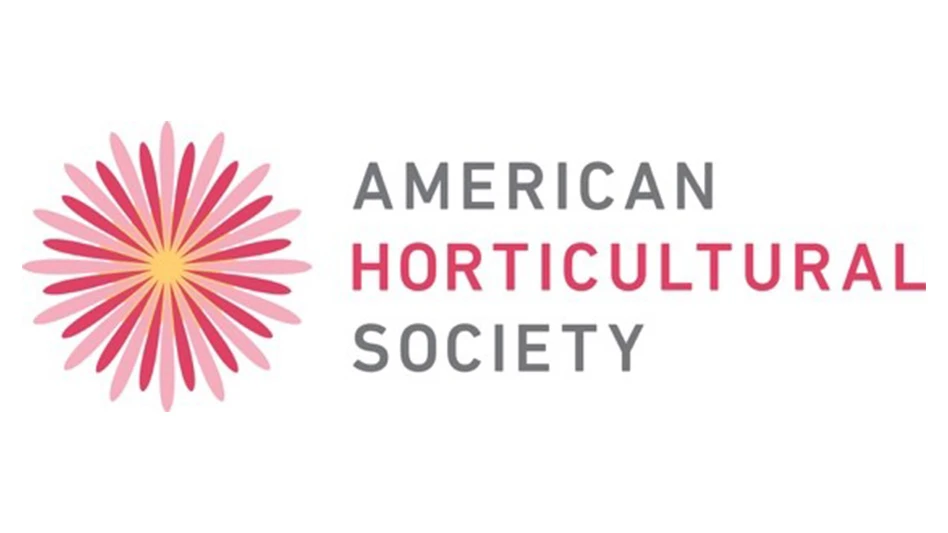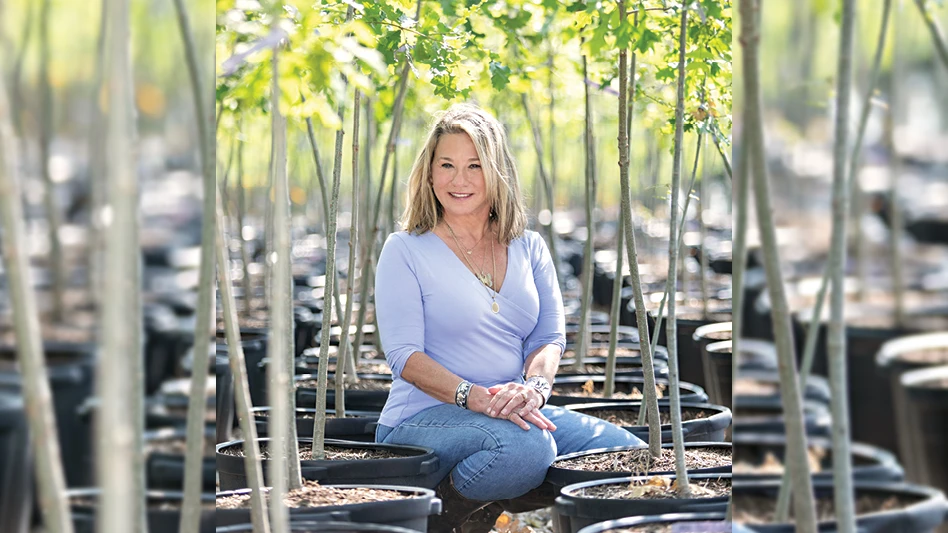 Minnesota in the winter is not the ideal place to try to propagate woody ornamental cuttings. Cold temperatures and low light conditions make rooting cuttings a real challenge. So when Jean-Marc Versolato at Bailey Nurseries in St. Paul began reading about how European growers were using LED lights to root cuttings, it piqued his interest.
Minnesota in the winter is not the ideal place to try to propagate woody ornamental cuttings. Cold temperatures and low light conditions make rooting cuttings a real challenge. So when Jean-Marc Versolato at Bailey Nurseries in St. Paul began reading about how European growers were using LED lights to root cuttings, it piqued his interest.
Versolato, who is the company’s plant health manager for the greenhouses, worked with Philips Horticultural Lighting and Hort Americas to design a separate propagation room in a production building to trial the LED lights.
“I felt that the LED lights were going to be the next improvement in growing,” Versolato said. “We started in February 2011 and ran a variety of crops under the new lights. We used three Cannon carts tied together side-by-side to form one large shelf that can hold up to 15 trays. The trial was conducted in a corner of our germination room.”
Versolato said the germination room was the perfect location for the trial. Located inside a production building, the room provides a constant 70°F and is equipped with fogging nozzles in the ceiling. The trial propagation area was partitioned with black and white plastic to avoid light contamination from the room’s fluorescent lights.
The cuttings only received red and blue light from Philips GreenPower LED Production Modules. The 5-foot modules, which matched the size of the carts, were located about 16 inches above the cuttings.
Cuttings were taken from a variety of plants in the greenhouses, including Spirea, Celastrus, Physocarpus and Hydrangea. The cuttings were sprayed with indole-3-butyric acid (IBA) to help initiate rooting, which is a normal company practice. The cuttings were stuck in 38-cell plastic trays (standard 11- × 21-inch) filled with Preforma growing medium from Jiffy. The cart shelves held five flats of each genus for a total of 15 flats.
The fogging nozzles filled the entire room with fog. The cuttings received no direct water misting or spraying.
“By using the fog we eliminated droplets from forming on the foliage, which greatly reduced the chance for Botrytis and loss of cuttings,” Versolato said. “Gravity caused the fog to descend on the cuttings and the fog kept the cuttings turgid.
“The LED lights generate heat, but nothing like other lights available for growing. For this reason the Preforma plugs remained moist and we didn’t need to apply any additional water.”
The cuttings rooted in three to four weeks. Versolato said in the greenhouses the cuttings root in four to five weeks and occasionally take longer for some species.
“Some of our more recent trials indicate that the more juvenile the cuttings are, the faster they root in this environment,” he said. “As an example, roses can root in seven to 10 days in the chamber while they root in 14 to 20 days in the greenhouses.”
Trialing other crops
After the initial propagation trial proved successful, Versolato was looking to try additional crops. During the summer in 2011 the company purchased tissue-cultured lilac micro-cuttings.
“We rooted three flats of micro-cuttings under the LED lights in three weeks,” Versolato said. “They required very little grower care whatsoever. The environment in the propagation chamber was controlled by the LED lights and the fogging nozzles. Also, no fungicide spray applications were made.”
Versolato said winter cutting propagation in the greenhouse can be difficult to manage because of low light levels, the temperature and the humidity. Based on the successful results in the propagation chamber during 2011, Versolato said in 2012 the company rooted 16,000 French lilac (Syringa vulagris) micro-cuttings, which was 25 percent of its total lilac cuttings.
 “During winter 2013, we rooted 70,000 lilac micro-cuttings, which was the entire crop,” he said. “We had three shipments or three planting dates. The first crop yielded 93-96 percent rooting success. The seven-year average for propagation in the greenhouse gave us 71-87 percent rooting success depending on varieties. With the LED lights we rooted the lilacs on six carts with three or five shelves (layers) per cart for a total of 100 flats. This is the only space currently allocated to LED multi-layer production where we think in terms of plants per cubic foot instead of per square foot.”
“During winter 2013, we rooted 70,000 lilac micro-cuttings, which was the entire crop,” he said. “We had three shipments or three planting dates. The first crop yielded 93-96 percent rooting success. The seven-year average for propagation in the greenhouse gave us 71-87 percent rooting success depending on varieties. With the LED lights we rooted the lilacs on six carts with three or five shelves (layers) per cart for a total of 100 flats. This is the only space currently allocated to LED multi-layer production where we think in terms of plants per cubic foot instead of per square foot.”
Although pleased with the rooting results under LED lights that he has gotten so far, Versolato said he thinks there are other factors that are instrumental in the cuttings rooting faster.
“The cuttings are being rooted in the Preforma plugs instead of our greenhouse growing medium, which consists of coir and peat moss,” he said. “The chamber also has very good temperature and humidity control. All of these factors, the growing medium, temperature, humidity and light, put together help to shave seven days off of the rooting schedule and drastically improved the rooting percentage or plant yield.”
Expanding propagation
Versolato said the propagation room will be used for hard to root crops. The room can hold up to 50 carts.
“We are not going to be wasting time and space in the trial area for crops that are easy to root in the greenhouses,” he said. “We are looking at a list of a dozen varieties/species that we would root in the propagation room knowing that they are difficult to root in the greenhouses. Some of the plants that will be trialed include Rhus typhina ‘Bailtiger’ Tiger Eyes, Lonicera ‘Dropmore Scarlet,’ Amelanchier alnifolia Standing Ovation, Daphne and Betula.”
 “We need to propagate 50,000 Tiger Eyes. Some will go into the chamber under the LED Production Modules and the remaining cuttings will be placed in the greenhouses. We just finished establishing 3,000 Lonicera Dropmore. And we will root 10,000 Amelanchier Standing Ovation in the chamber.”
“We need to propagate 50,000 Tiger Eyes. Some will go into the chamber under the LED Production Modules and the remaining cuttings will be placed in the greenhouses. We just finished establishing 3,000 Lonicera Dropmore. And we will root 10,000 Amelanchier Standing Ovation in the chamber.”
In 2012 the company changed the light setup in the propagation chamber. The LED Production Modules, which had been mounted directly above the plants on the carts, are now mounted on wooden frames. There are two modules per shelf at a distance of 15 to 20 inches from the plants.
“We wanted to be sure that there was enough light for the plants and they were production efficient,” Versolato said. “This setup allows us to easily move the carts in and out of the chamber.”
The right light recipe
Versolato said the red and blue LED lights come in different configurations depending on what a grower wants the plants to do, whether it’s develop roots, hasten flower initiation or speed up time to flower. Bailey Nurseries is using modules with 75 percent deep red and 35 percent blue light. According to Philips, this light configuration is optimal for vegetative growth and root development.
“The recipe that we are using is generic and works with just about any plant we are trying to propagate,” Versolato said. “It would be too difficult to have a different recipe for every genus and species that we are growing.”
Versolato said Philips can provide growers with the information to tweak the light wavelength recipe to increase or decrease the amount of red light or blue light.
“For Dutch growers, who may be producing acres of anthurium or tulips as a monoculture crop, it is easy for them to have a specific light recipe for that one crop,” he said. “But in our situation where we have many different crops, it would take a lot to come up with a different recipe for each one of them.”
Lighting plugs
In 2012, Versolato performed trials on bedding plant plugs grown on greenhouse benches.
“Philips has different types of LED lights,” he said. “In addition to the LED Production Modules we use in propagation, Philips also offers flowering bulbs that can be used with standard light fixtures. One bulb helps to promote flowering. The bulbs we used were deep red and white.”
The trials Versolato conducted were to determine if the flowering LED lights would increase flower bud initiation on impatiens during early season crop production. He said the first impatiens crop is grown during the short days of the year and the plants are very slow to develop buds.
Even though this first bedding plant crop is grown under high intensity discharge lights, Versolato wanted to see what impact the addition of LED light would have on the plants. Based on the promising results achieved in 2012, Versolato is repeating the trial again this year. The 2013 trial will compare two types of LED flowering bulbs. One combines deep red and white light and the other is deep red, far red and white light.
For more: Bailey Nurseries Inc., www.baileynurseries.com. Hort Americas, www.hortamericas.com. Philips Horticultural Lighting, www.philips.com/horti.
Photos courtesy of Bailey Nurseries
David Kuack is a freelance technical writer in Fort Worth, Texas; dkuack@gmail.com. Jean-Marc Versolato is plant health manager, Bailey Nurseries, St. Paul, Minn.; jean.marc.versolato@baileynursery.com.
Get curated news on YOUR industry.
Enter your email to receive our newsletters.
Explore the May 2013 Issue
Check out more from this issue and find your next story to read.
Latest from Nursery Management
- The HC Companies, Classic Home & Garden merge as Growscape
- Eason Horticultural Resources will now officially be known as EHR
- BioWorks receives EPA approval for new biological insecticide for thrips, aphids, whiteflies
- Ellen Mackenbach-Lakeman appointed new CEO of Dümmen Orange
- Southern Garden Tour sets 2025 dates for trial garden open houses
- New book explores plants that thrive in Rocky Mountains
- American Floral Endowment establishes Herman Meinders Memorial Tribute
- These companies are utilizing plastic alternatives to reduce horticultural waste





